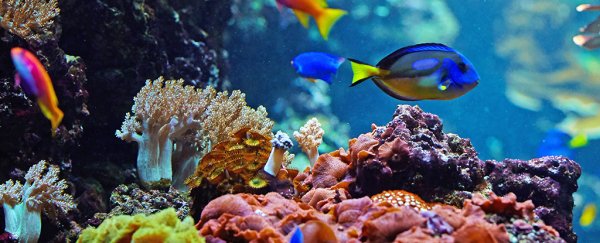When a mass extinction event hits, it can be disastrous for life on the planet by not just wiping out species, but transforming ecosystems forever.
But new research shows there are places on Earth where creatures are remarkably resilient against these events - marine ecosystems under the sea. And this surprising discovery could help us predict ecosystem changes in the future.
Researchers have studied fossil records from the Late Triassic mass extinction, which happened around 201.3 million years ago, and found that marine life did not fundamentally change, even though the vast proportion of species were killed off.
The international team of researchers says that while marine species were still badly affected by the event, enough life survived underwater to keep the ecosystems functioning. The findings could help us understand more about how the changing climate of today could affect the planet.
"While the Late Triassic mass extinction had a big impact on the overall number of marine species, there was still enough diversity among the remaining species that the marine ecosystem was able to function in the same way it had before," says lead researcher Alex Dunhill from the University of Leeds in the UK.
It's thought that huge volcanic eruptions, and the subsequent warming of the planet caused by the greenhouse gases produced, was behind the Late Triassic extinction event.
At least half the species on Earth at that time were wiped out by the rise in temperatures, and in the event's aftermath, dinosaurs came to dominate life on our planet.
The researchers analysed fossils dated between the Middle Triassic to the Middle Jurassic periods, a time span of around 70 million years, covering life before and after the mass extinction event.
Ocean-dwelling animals were classified by how they moved, where they lived, and how they fed, and the study showed that none of these categories of life completely disappeared after the extinction event.
That said, there were major impacts on different regions and the environment as a whole, and some specific marine ecosystems were badly damaged.
"We're not saying nothing happened," says one of the researchers, palaeontologist William Foster from the University of Texas at Austin. "Rather, global oceans in the extinction's aftermath were a bit like a ship manned by a skeleton crew – all stations were operational, but manned by relatively few species."
The idea of a skeleton crew of lifeforms keeping the lights on in an ecosystem was first raised by Foster and his colleague Richard J. Twitchett in 2014, after another study focussed on the Late Permian mass extinction event about 252 million years ago.
The current study found one of the hardest-hit underwater organisms were corals, and the fossil record shows it took some 20 million years before tropical reef ecosystems recovered from the Late Triassic extinction, even though the ecosystem as a whole carried on functioning.
With corals again under threat from rising temperatures in the modern day, the new research could provide a blueprint for the potential damage we're going to see – and perhaps give us some clues for how to prevent it.
On a more positive note, it shows life underwater is incredibly resilient, and capable of surviving through even the worst times of environmental upheaval on our planet.
If marine ecosystems were able to cling on to life during the Late Triassic event, then perhaps they'll be able to do so again – though the onus is on us to try and avoid those cataclysmic shifts from happening in the first place.
The research has been published in Palaeontology.
